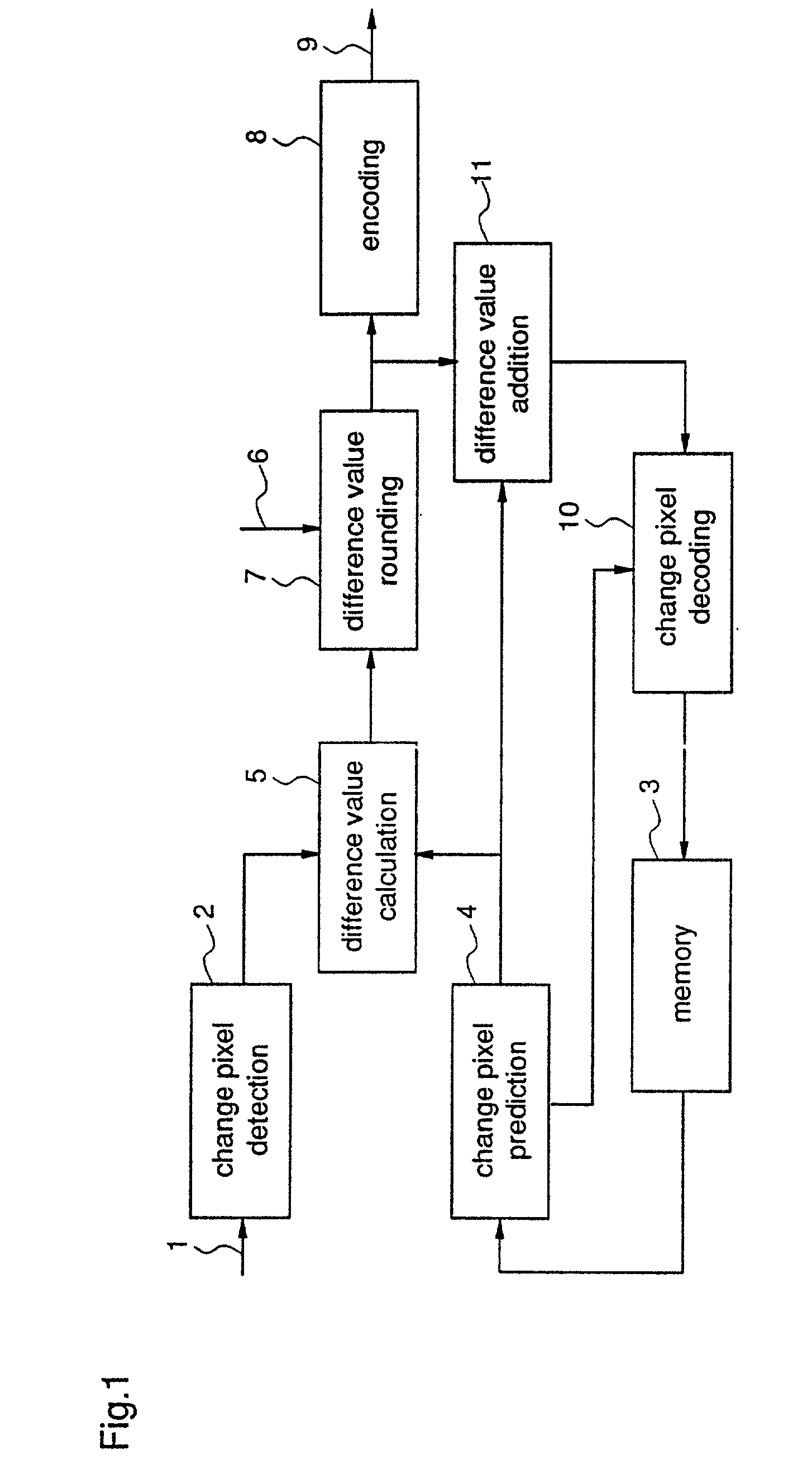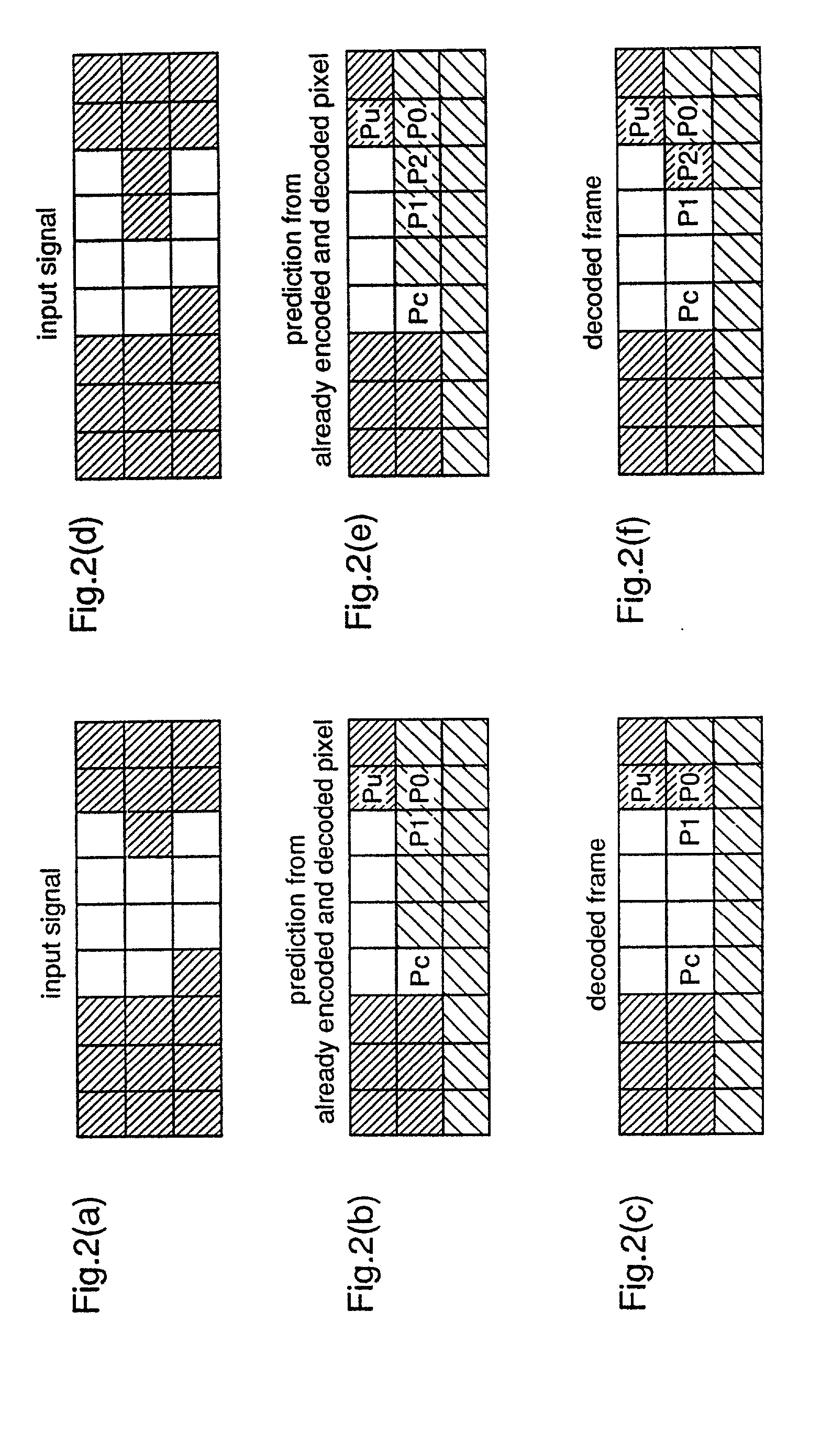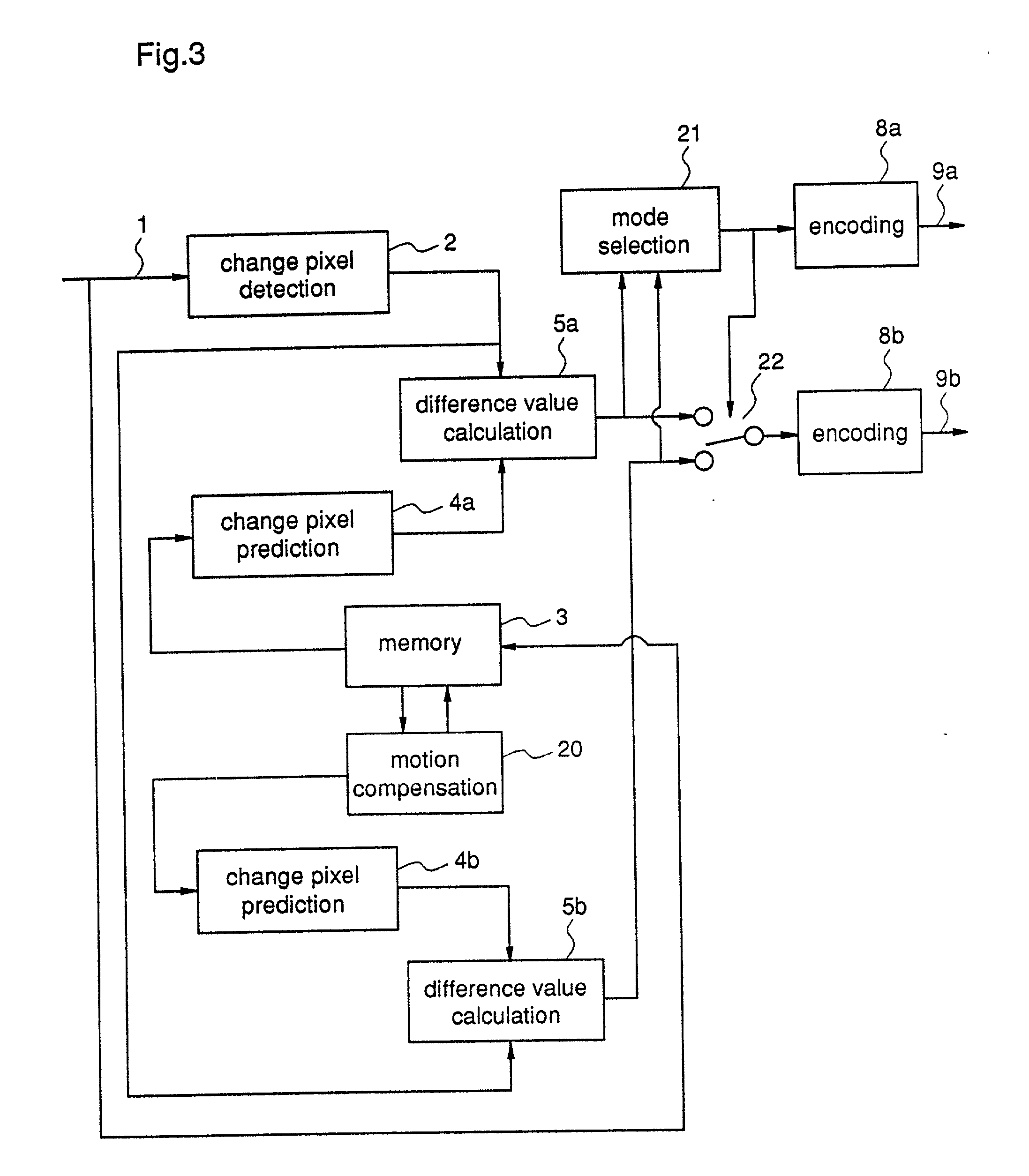Image encoding apparatus, image decoding apparatus, image encoding method, image decoding method, image encoding program recording medium and image decoding program recording medium
a technology of image encoding and image encoding, applied in the direction of color television with bandwidth reduction, instruments, television systems, etc., can solve the problems of inability to largely improve the compression rate by allowing the visually less important picture quality degradation, and the inability to reverse encoding, etc., to achieve less picture quality degradation
- Summary
- Abstract
- Description
- Claims
- Application Information
AI Technical Summary
Benefits of technology
Problems solved by technology
Method used
Image
Examples
embodiment 1
[0523] An image encoding apparatus according to a 1st embodiment of this invention performs efficient encoding in prediction encoding by selecting difference values having short code lengths within the given range.
[0524] FIG. 1 is a block diagram showing the structure of the image encoding apparatus according to the 1st embodiment of this invention. In the figure, 1 indicates an input signal, which is input to the image encoding apparatus as a two-valued image signal. 2 indicates a change pixel detector which detects pixels changing pixel values in the input signal 1 and outputs the detected change pixels. 3 indicates a memory which temporarily stores already encoded and decoded image signals which are to be used as reference images. 4 indicates a change pixel predictor which predicts change pixels output by the change pixel detector 2 based on pixels changing pixel values of the reference image, and outputs predicted change pixels. As a prediction method used by the change pixel pr...
embodiment 2
[0534] An image encoding apparatus according to a 2nd embodiment of this invention performs processes, adaptively switching an encoding based on prediction from a particular frame and an encoding based on prediction from a reference frame with motion compensation.
[0535] FIG. 3 is a block diagram showing the structure of the image encoding apparatus according to the 2nd embodiment. In the figure, 20 indicates a motion compensation unit which generates reference pixel values for the already encoded and decoded image signal of a reference frame by performing motion compensation. 21 indicates a mode selector which compares the difference value when prediction is carried out based on the image signal of the particular frame, with the difference value when prediction is carried out based on the image signal of the reference frame, and then selects one of the two values which has the smaller bit number required for encoding. 22 indicates a switching unit which selects the difference value ...
embodiment 3
[0547] An image decoding apparatus according to a 3rd embodiment of this invention which performs appropriate decoding for encoded signals encoded by the image encoding apparatus according to the 2nd embodiment.
[0548] FIG. 5 is a block diagram showing the structure of the image decoding apparatus according to the 3rd embodiment. In the figure, 30a and 30b correspond to the encoded signals 9a and 9b of FIG. 3, respectively. 30a indicates a signal into which the encoding mode is encoded, and 30b indicates a signal into which the difference value is encoded. 31a indicates a decoder which decodes the signal into which the encoding mode is encoded and obtains a predicted mode signal. 31b indicates a decoder which decodes the signal into which the difference value is encoded and obtains a decoded difference value signal. 32 indicates a switching unit which switches the predicted values of change pixels in response to the predicted mode signal obtained by the decoder 31a. 34 indicates a de...
PUM
 Login to View More
Login to View More Abstract
Description
Claims
Application Information
 Login to View More
Login to View More - R&D
- Intellectual Property
- Life Sciences
- Materials
- Tech Scout
- Unparalleled Data Quality
- Higher Quality Content
- 60% Fewer Hallucinations
Browse by: Latest US Patents, China's latest patents, Technical Efficacy Thesaurus, Application Domain, Technology Topic, Popular Technical Reports.
© 2025 PatSnap. All rights reserved.Legal|Privacy policy|Modern Slavery Act Transparency Statement|Sitemap|About US| Contact US: help@patsnap.com



